Nexus 9 vs iPad mini 3: Which small tablet to buy?

Which tablet is the best?
It’s time for Google and Apple to battle it out again in the tablet arena with the newly announced Nexus 9 and iPad mini 3. Both companies are well known for defining the standard we expect from the more portable tablet sizes – although they are consistently being challenged by the likes of the Samsung Galaxy Tab S 8.4 of late.
You’d be hard pressed to afford both, unless you’ve got a large chunk of money burning a hole in your pocket. So, we’ve put the two head-to-head to help you decide which 2014 tablet is the best for you.
See also: Best tablets 2014
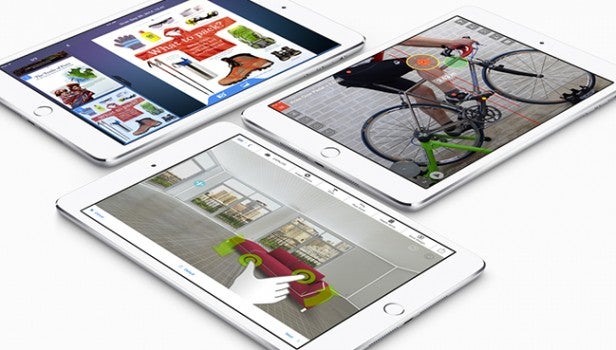
Nexus 9 vs iPad mini 3: Design
Nexus 9 – Soft, matte plastic back, brushed metal sides, 7.95mm thick, 425g (Wi-Fi)
iPad mini 3 – Aluminium body, 7.5mm thick, 331g (Wi-Fi) or 341g (Wi-Fi and 4G LTE)
The actual design of the Nexus 9 and iPad mini 3 are very similar, but there are a few key differences that may make you side with one or the other in terms of aesthetics.
The HTC made Nexus 9 looks pretty much like a larger version of Google’s 2013 smartphone, the Nexus 5. It has the same soft touch plastic back, but improves upon the design with brushed metal edges – similar to what Samsung has done with the Samsung Galaxy Alpha and Samsung Galaxy Note 4.
While the 7.95mm thick Nexus 9 is slim and relatively light (425g Wi-Fi only or 436g 4G LTE), it can’t compete with the dimensions and weight of other slimline tablets on the market, including the Sony Xperia Z3 Tablet Compact (270g and 6.4mm thick) or Samsung Galaxy Tab S 8.4 (294g Wi-Fi and 6.6mm thick).
This is something the iPad mini 3, and all previous iPad mini iterations before it, have excelled in. The iPad mini 3 is 7.5mm thick and weighs just 200g, which is exactly the same as the iPad mini 2.
The iPad mini 3 has exactly the same aluminium unibody construction of its predecessor, complete with diamond cut edges.
Those looking for the premium finish may want to opt for the iPad mini 3 and its metal gloss, but the Nexus 9 may have the edge over the iPad alternative because its construction may make it a cheaper purchase.
It’s worth noting that the Nexus 9 comes in Indigo Black, Lunar White and Sand coloured backs, while the iPad is available in Space Grey, White and now Gold too.
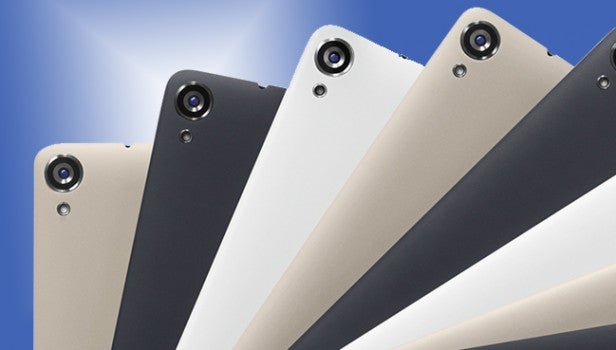
Nexus 9 vs iPad mini 3: Screen
Nexus 9 – 8.9-inch, 2048 x 1536p resolution, IPS
iPad mini 3 – 7.9-inch, 2048 x 1536p resolution, IPS
Despite the QHD 2560 x 1440p resolution display in the Nexus 6, Google and HTC opted to kit out the Nexus 9 with an 8.9-inch 2048 x 1536p QXGA resolution display, which just happens to match the Retina display resolution found in the iPad mini 3.
Just as its predecessor, the iPad mini Retina, the iPad mini 3 features a 2048 x 1536p Retina display with a 7.9-inch screen size. We’re not complaining though, the screen of the iPad mini 2 was stunning and impressive for gaming, movies and other content.
However, it is a little disappointing that Apple didn’t decide to pack in something a little higher, such as a full 1080p HD display or even a 720p HD display as found in the iPhone 6 Plus and iPhone 6 respectively.
The Nexus 9 has improved upon the Nexus 7’s 1920 x 1200p display, which was already super-sharp and featured excellent colour reproduction.
So you’re looking at the same screen resolution for both tablets here, but not the same pixel density.
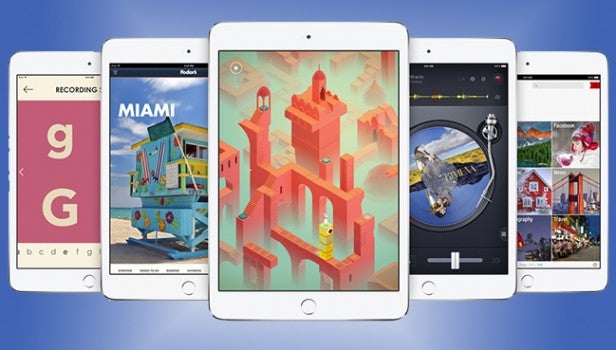
The 7.9-inch iPad mini 3 has a 326ppi image density, while the 8.9-inch Nexus 9 offers a 287ppi image density. That means side-by-side the Nexus 9 won’t be as sharp as the iPad mini 3, despite their matching screen resolutions.
The Nexus 9 now has a 4:3 aspect ratio rather than the customary 16:9. That also matches the iPad mini 3, meaning they both ditch the widescreen aspect ratio to make the screen seem much larger than the inches suggest. That’s very good for gaming, web browsing and apps.
Although it’s not so great for movies as the 4:3 aspect ratio will give you black bars top and bottom of the video content to make it fit the screen.
If you’re not bothered by a little loss in sharpness, you basically have to decide whether you want that extra inch of screen between the iPad mini 3 and Nexus 9.
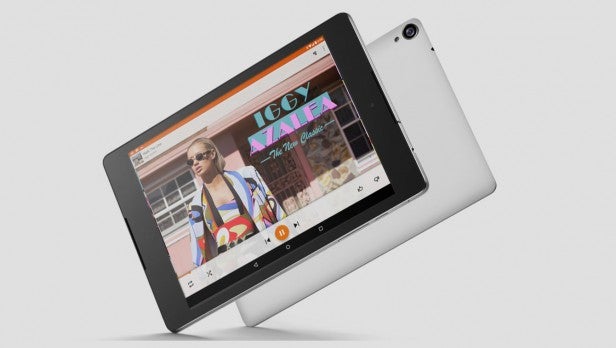
Nexus 9 vs iPad mini 3: CPU and RAM
Nexus 9 – 64-bit Nvidia Tegra K1 CPU, 2GB RAM
iPad mini 3 – 64-bit Apple A7 CPU
Google has finally caught up with Apple and used a 64-bit processor for the Nexus 9 – the Nvidia Tegra K1 found in the Nvidia Shield Tablet. It is clocked at 2.3GHz and packed with 2GB of RAM, the Nexus 9 should be slick to use regardless of what you’re doing. However, it’s GPU is where the Tegra K1 really shines, as its bespoke Keplar architecture is modelled on Nvidia’s own PC graphics cards.
That means the K1 can support the same API and systems used in PC games, making Android games run better and smoother than on rival tablets.
Strangely, Apple decided not to upgrade the CPU and RAM of the iPad Mini 3. It runs on the same Apple A7 processor as the iPhone 5S, iPhone 5C, iPad mini 2 and original iPad Air.
Navigating the iPad mini 3 will be speedy and responsive, as you’d expect from an Apple product. Plus, the A7 processor and iOS 8 both have some major game improvements that come in the form of Metal, which make playing the latest 3D games look and perform a lot better than previous generation iPhones and iPads.
We’ll have to put the two tablets to the test when we review them to get the full answer to the processor debate, but the fact the iPad mini 3 runs on last year’s technology means the Google Nexus 9 will most likely be vastly superior.
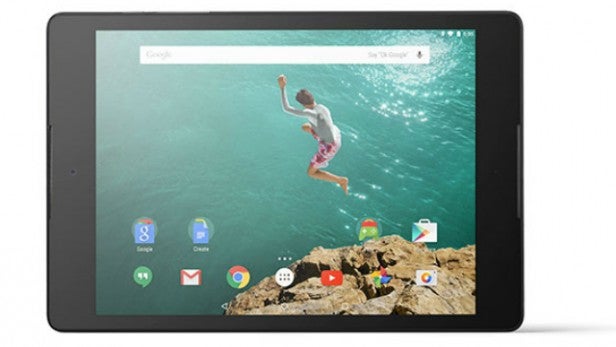
Nexus 9 vs iPad mini 3: Storage
Nexus 9 – 16GB and 32GB options
iPad mini 3 – 16GB, 64GB and 128GB options
You won’t be surprised, but neither Apple nor Google has kitted out the latest generation of tablets with a microSD card slot. So, you’ll need to put up with the in-built memory option you choose, because there’s no other way to expand it beyond services like Dropbox, iCloud Drive, Google Drive and co.
As the iPad mini 3 is generally classed as the higher-end tablet, Apple offers far more internal storage options than Google. You can pick up the iPad mini 3 starting with 16GB of storage, going all the way up to 128GB. It’ll cost you a pretty penny for the 128GB option though.
Plus, you’ll want to consider whether you want 4G LTE compatibility with any of the internal storage sizes too, which again puts the price up quite a bit.
Sadly, Apple has ditched the 32GB option. So you can pick up the Wi-Fi 16GB option for £319, 64GB model for £399 and 128GB for £479. The Wi-Fi and Cellular options start at £419 for 16GB, £499 for 4G LTE and 128GB for £479.
It’s a bit simpler with the Nexus 9. You can either choose the 16GB Wi-Fi only option, or 32GB Wi-Fi or 32GB Wi-Fi and 4G LTE. Google hasn’t yet revealed the UK pricing for any of these models, but you should expect to pay quite a bit less than the iPad mini 3 alternatives.
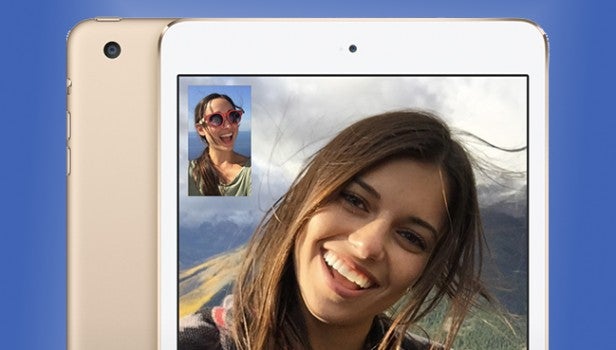
Nexus 9 vs iPad mini 3: Camera
Nexus 9 – 8-megapixel rear and 1.6-megapixel front-facing cameras
iPad mini 3 – 5-megapixel rear and 1.2-megapixel front-facing cameras
Although people should be banned from taking pictures with their tablets in public, you may want to know what the camera specs are like for the iPad mini 3 and Nexus 9.
Google has kitted out the Nexus 9 with an 8-megapixel rear camera with auto-focus, LED flash and f/2.4 aperture.
The iPad mini 3 has exactly the same camera specs as its predecessor. In the rear the iPad mini 3 features a 5-megapixel snapper with aperture f/2.4, 1080p HD video recording and autofocus.
As for the more useful front-facing cameras for video calling, you’re looking at a 1.6-megapixel option with f/2.4 aperture in the Nexus 9 and a 1.2-megapixel FaceTime HD camera in the iPad mini 3.
We’ll put both tablets through their paces when we get them in to review and will give our final verdict when we see their results.

Nexus 9 vs iPad mini 3: Software
Nexus 9 – Android 5.0 Lollipop
iPad mini 3 – iOS 8
Both the Nexus 9 and the iPad mini 3 are rocking brand new user interfaces – Android 5.0 Lollipop and iOS 8 respectively.
You can read our pick of the biggest new Android 5.0 Lollipop features, but the main difference is its aesthetics. Lollipop has a brand new look dubbed Material, which makes use of interface layers but makes the colour scheme and overall look a lot simpler.
Unlike iOS 8 (and iOS 7 before it), Android Lollipop isn’t trying to offer a flat-look UI. Its layers, combined with new real-time shadows, make it look a lot more tactile and aesthetically appealing than any previous Android iterations. Plus, the aim is that Lollipop will look more similar across all Google platforms – Android and Chrome.
Android 5.0 Lollipop has also got some new dynamic heads-up notifications that function a lot more like iOS 8, popping up over anything you’re doing. They’re interactive too, so just swipe down on them to respond to the latest message or answer a phone call.
There’s more information in our extensive Android 5.0 Lollipop features list, so you can take a proper look at what’s new.
As for iOS 8, this is where the iPad mini 3 as part of an Apple product family really shines. The big features of iOS 8 are to do with continuity between all your Apple devices – iPhone, iPad and Mac. You can read messages, answer calls and set up instant hotspots across devices, and even pick up documents mid-flow on a different device when they’re nearby.
Notifications have been improved on iOS 8 too, meaning you can interact with them as soon as they pop up: dismissing junk emails, answering texts or jumping straight into games from whatever else you were doing.
You can read more in our iOS 8 vs iOS 7 comparison for more details on the new features.
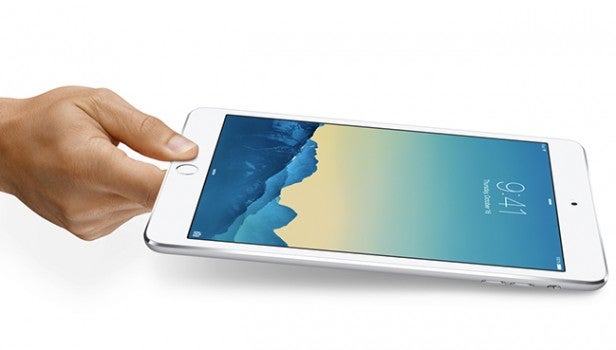
Nexus 9 vs iPad mini 3: Anything Else?
Nexus 9 – NFC, Bluetooth 4.1, front-facing HTC Boomsound speakers
iPad mini 3 – Touch ID, NFC/Apple Pay, Bluetooth 4.0
Pretty much the main unique selling point of the iPad mini 3 (apart from its new golden hue) is its Touch ID fingerprint sensor. The technology was introduced back with the iPhone 5S and now all of Apple’s new products have been kitted out with the scanners.
Touch ID is built into the home button of the iPad mini 3, discernable by the signature metal ring around the sapphire glass protected button. It will allow you to make online and app payments using your fingerprint, as well as with all online Apple Pay services.
The Nexus 9 doesn’t have any kind of fingerprint scanning technology inside, but it does now feature HTC BoomSound equipped dual front-facing speakers. That should mean your audio and video sound a lot better when you’re playing it straight out of the tablet.
Unlike the iPad mini 3, the Nexus 9 has NFC connectivity and even comes with the latest Bluetooth 4.1 technology.
Impressions: Which should you buy?
It’s getting harder and harder to really side with one tablet or another these days. The iPad mini 3 has a better build quality, but the Tegra K1 processor will mean that the Nexus 9 is a better performing tablet overall. Possibly by quite a margin.
The Nexus 9 has a bigger screen, but therefore takes damage in terms of pixel density – meaning the iPad mini 3 just wins out there. But, the iPad mini 3 isn’t much of an improvement over the iPad mini 2, meaning you might want to take a look at that before you splash the cash.
We’ll know more when we’re reviewed both tablets, but at the moment, it’s really hard to call which you should choose – especially when it looks like the Nexus 9 may not be that much cheaper than the iPad mini 3.
Read more:

